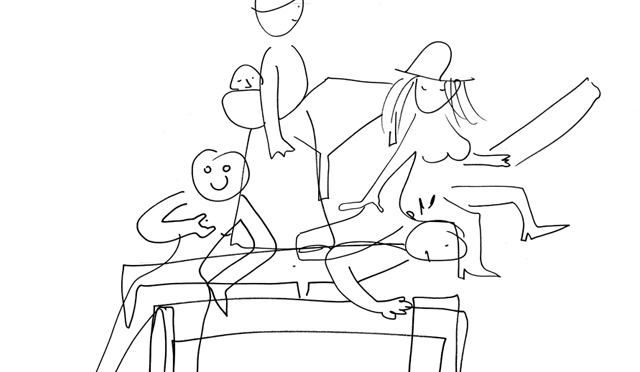Search
To search for an exact match, type the word or phrase you want in quotation marks.
A*DESK has been offering since 2002 contents about criticism and contemporary art. A*DESK has become consolidated thanks to all those who have believed in the project, all those who have followed us, debating, participating and collaborating. Many people have collaborated with A*DESK, and continue to do so. Their efforts, knowledge and belief in the project are what make it grow internationally. At A*DESK we have also generated work for over one hundred professionals in culture, from small collaborations with reviews and classes, to more prolonged and intense collaborations.
At A*DESK we believe in the need for free and universal access to culture and knowledge. We want to carry on being independent, remaining open to more ideas and opinions. If you believe in A*DESK, we need your backing to be able to continue. You can now participate in the project by supporting it. You can choose how much you want to contribute to the project.
You can decide how much you want to bring to the project.

In many aspects of symbolic creation and its dissemination, the institution plays a key role in promoting, fostering, and disseminating the protection or communication of art, as much as criticism, education, or science. It can also be responsible for the dynamics that lead everything in quite the opposite direction, be it through inertia or poor organisation.
On the other hand, the word institution and its marvellous polysemy are not limited to the organ or organism that coordinates and administers elements of public interest. It can also refer to the establishment or foundation of something, and of course, to the prestige of representing, establishing certain values. If someone or something is considered an institution, it or they will be respected as a source of credibility, experience and good practice.
During this month of August, a month of rest or slowing down for many, we’ve wanted to maintain the dynamics of articles related to each other around a common theme that seemed important to bring to the foreground. At A*DESKe’ve been asking ourselves for a long time now about the role and the apices of the institution in relation to art and criticism.
We began the month with a criticism by Ángel Calvo Ulloa on Tino Sehgal, an artist who through his practice questions the structure of institutions, the market, curators, the role of the artist, and of the public…With his work, that fits with difficulty into the institutional framework, Sehgal has managed to be present in a large number of institutions and events, becoming “an institution” in his expansion of what the actual limits of the institution are.
We dedicated the second week of August to recuperating a text a by Juan Canela based on his residency in Buenos Aires in 2013. In it he questions the contrasting realities of the European and Argentine context. While one suffers from the inertia and weight of the cuts, and a lack of flexibility, the other seems to be experimenting a need for vitality, elasticity, and the adaptation of the institution. Still valid today, Canela ends calling for the need for self-criticism as members of a scenario that moulds itself, as actors of a reality capable of generating other forms of action.
Continuing along the line of the capacity to “change things” that Juan Canela points to in his article, we dedicated the third week of August to recuperating “The voice of the forest”, written by Kamen Nedev towards the end of May 2011, the month of the famou 15-M. That month the foundations of the immovable “institution”, in negative terms, trembled, or at least seemed to. The simultaneous, massive and unanimous protests of the “indignados” were to fill a new form of opposition with optimistic energy; direct and by the citizens. Four years later, many of their protests against the institution are still current and questions remain open about its real effectiveness. But the last municipal elections bore witness to the fact that “yes we can” still has potential.
On his part Martí Manen pointed in 2009 to a key element in the adaptation (or the eternal lack of adaptation) of the institution and the context: time. Reaching into all corners, Manen gave an exhaustive account of the moments, rhythms and dynamics in which it is complicated (not to say impossible) to import or export “reality”, communicate effectively, and totally, the artistic intention in a context in which “institutional time” is always distinct from “real time”.
And to complete this revision of the institution, we recuperate [a text by Eduardo Pérez Soler->http://www.a-desk.org/highlights/Nueva-traduccion-ARXIU-L.html. Where he introduced a new reality of contemporary society and its influence on the world of art and its dissemination (Internet and the world-wide-web), emphasising the need for the classical museum to adapt and open up and the importance of its role beyond that of institutional bureaucratization as a guarantor and stabiliser.

A*DESK is a critical platform focused on publishing, training, experimentation, communication and dissemination in relation to contemporary culture and art, which is defined by transversality. The starting point is contemporary art, because that is where we come from and this awareness allows us to go much further, to incorporate other disciplines and forms of thought in order debate issues that are relevant and urgent for understanding our present.
"A desk is a dangerous place from which to watch the world" (John Le Carré)